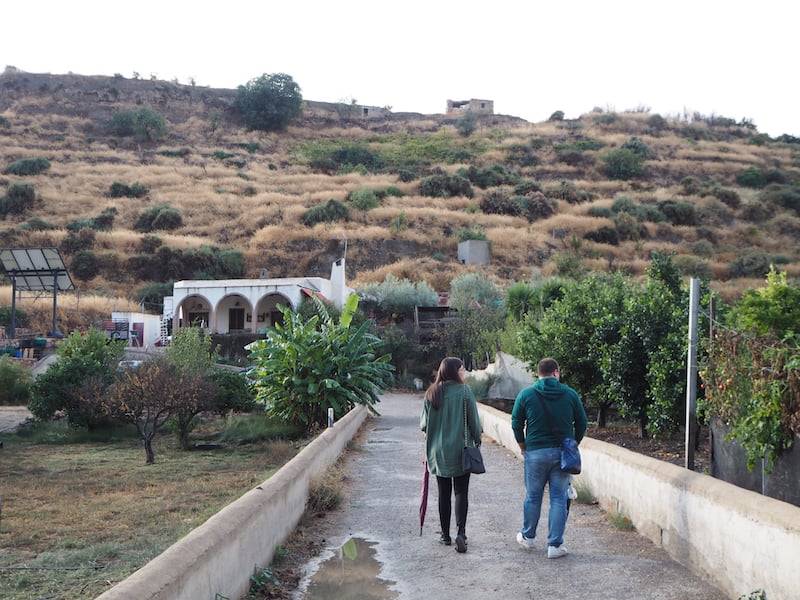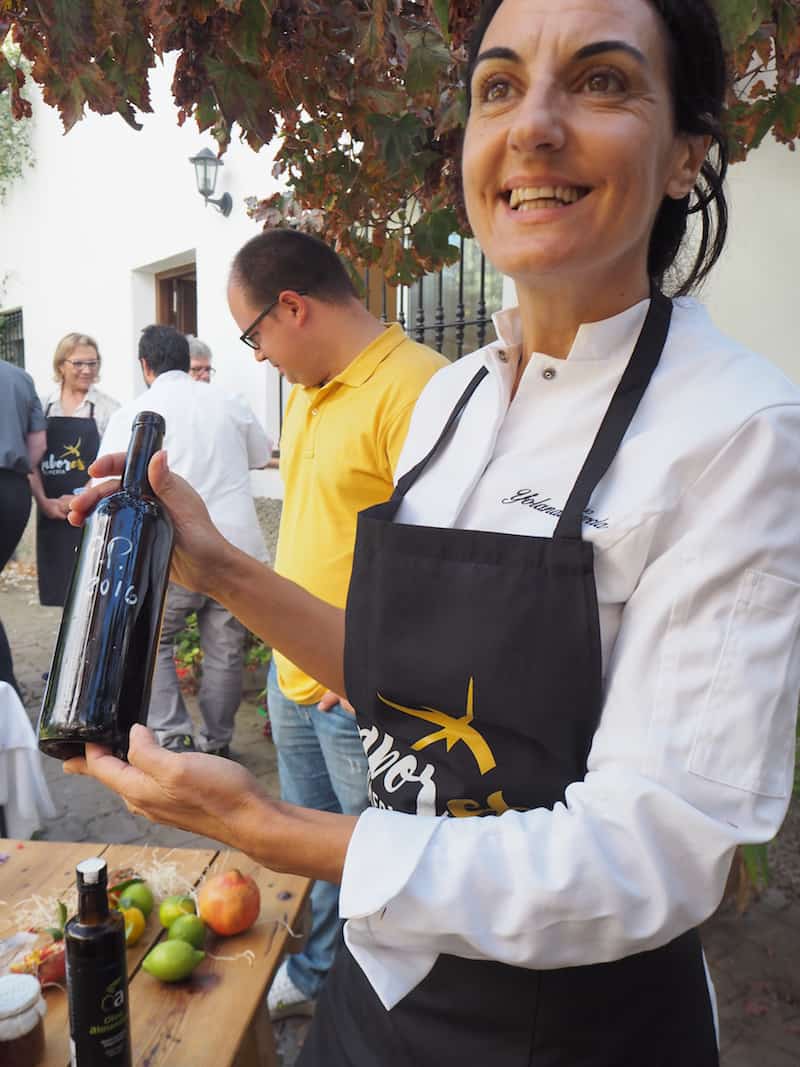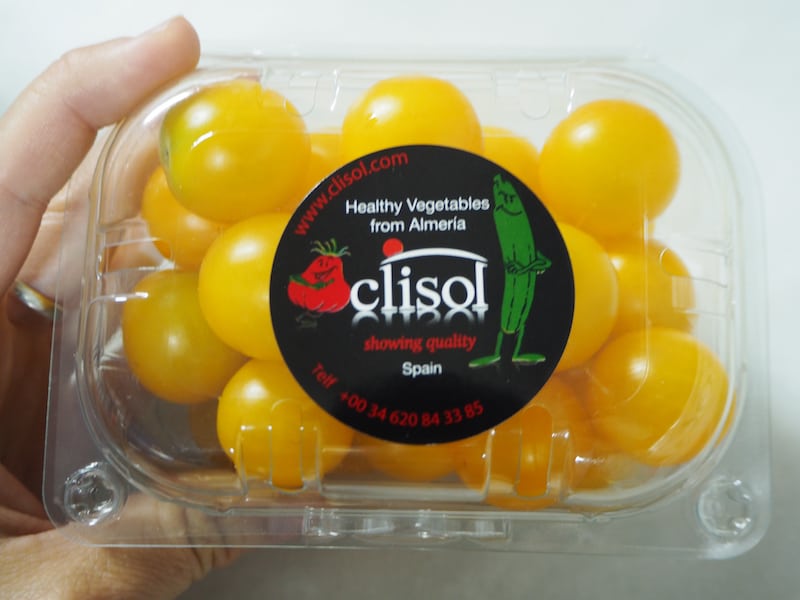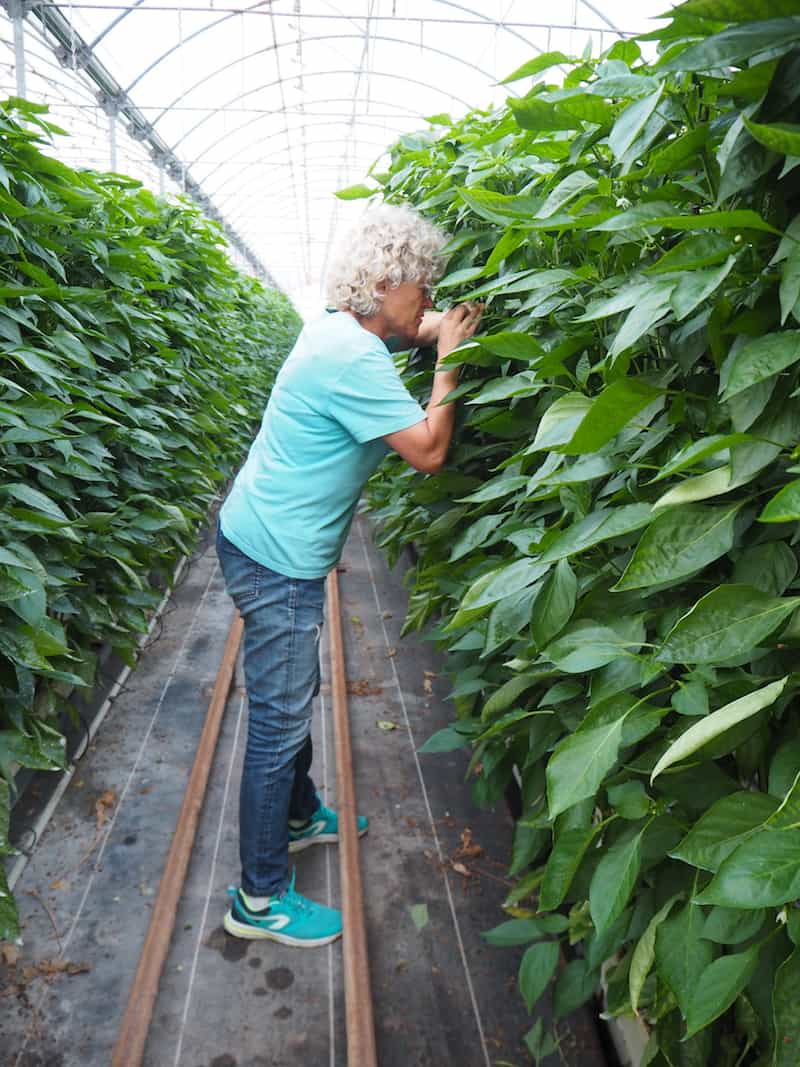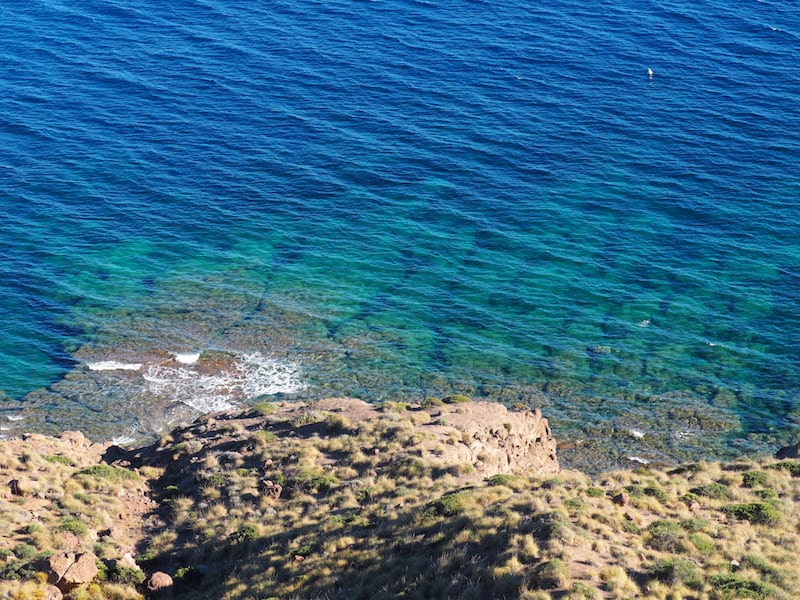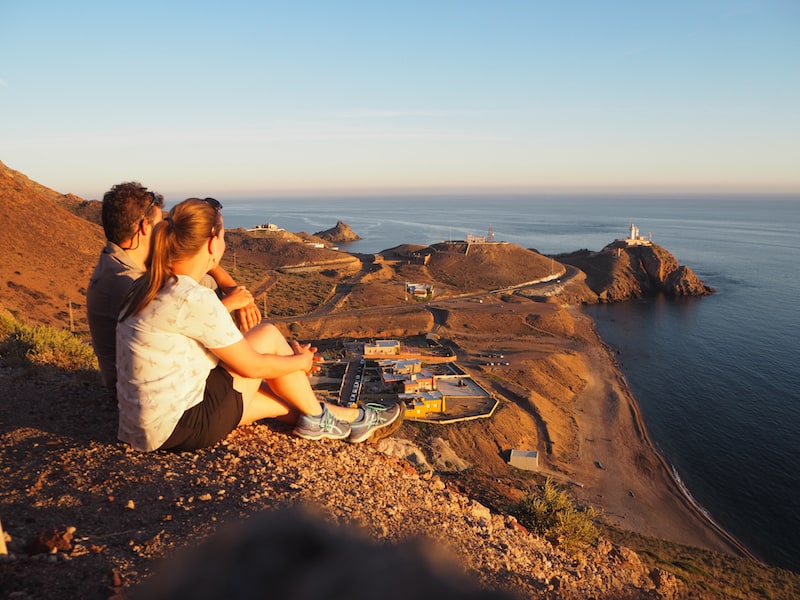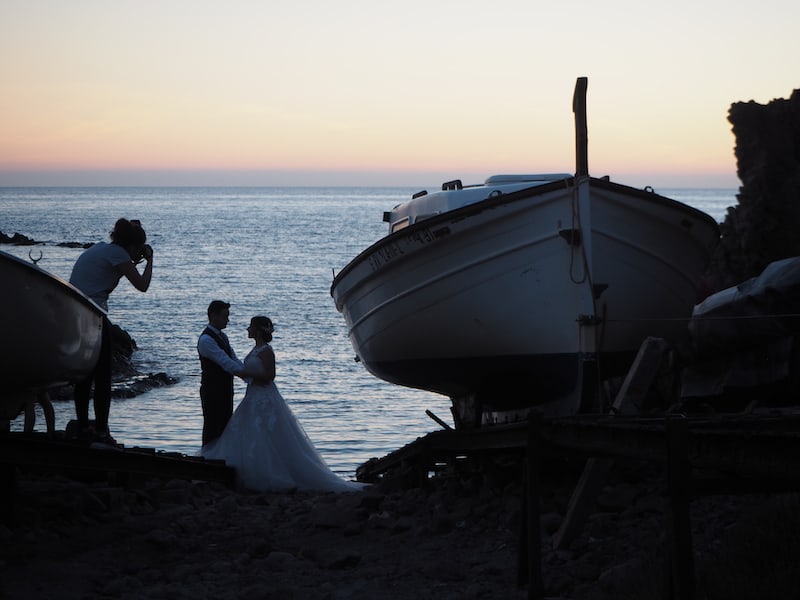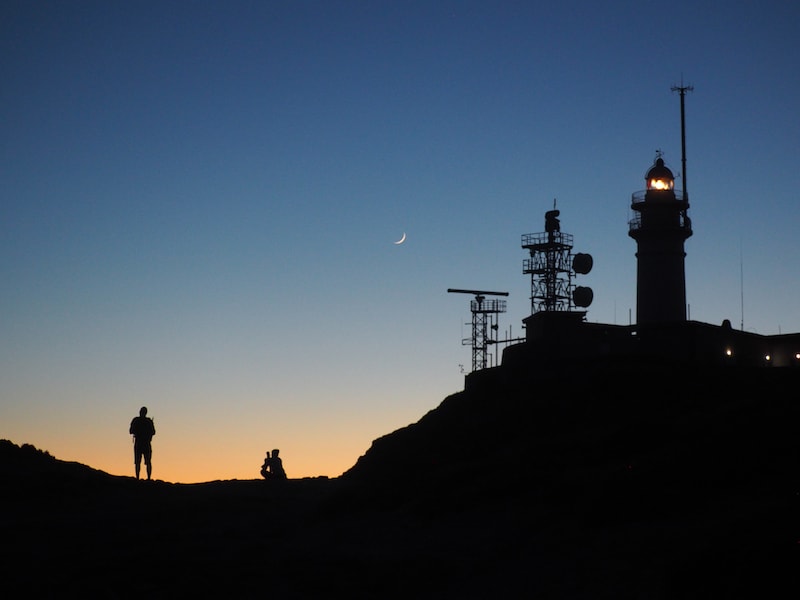Looking at the colours of Almería contained in this post, you will never believe me to be talking to you about the “driest place in Europe”. Located at the south-eastern edge of Spain, Almería county is bordered only by the glistening Mediterranean Sea to the south, as well as the mighty, often snow-covered tips of the Sierra Nevada mountain ranges to the north. In between, almost no rain ever falls, especially inland where the scenery is akin to classic Western movies. Which, by the way, the area really is: Cabo de Gata nature park has indeed served as the backdrop to Clint Eastwood’s “For a Few Dollars More”, as my guide for the day, David Monge explains. I smile, thinking of my Dad who love to know facts like these. And realise that I’ve really come to enjoy Almería quite a bit.
Well over ten years ago, I travelled in Andalusia for the first time, saw virtually all there was to see from Cádiz to Málaga, from Seville to Córdoba. Almería? It was but a name on a map.
Now, however, I feel like I’ve finally arrived at Southern Spain’s last secret corner, truly worth discovering. About two hours’ drive from Málaga (you can easily get good flight connections here from other airports in Europe), you’ll be met by spectacular coastal landscapes, charming little villages and truly fascinating people: The warm-hearted wine grower & sparkling wine producer José Luis, the ambitions Michelin-star-chef Yolanda García, the energetic “plant whisperer” Lola Gómez Ferrón, the simply delightful “ship grape family” of Rosa María Pascual.
“Elena, how do you always get to meet all these locals?”, I am often asked.
Well, let us start from the beginning.
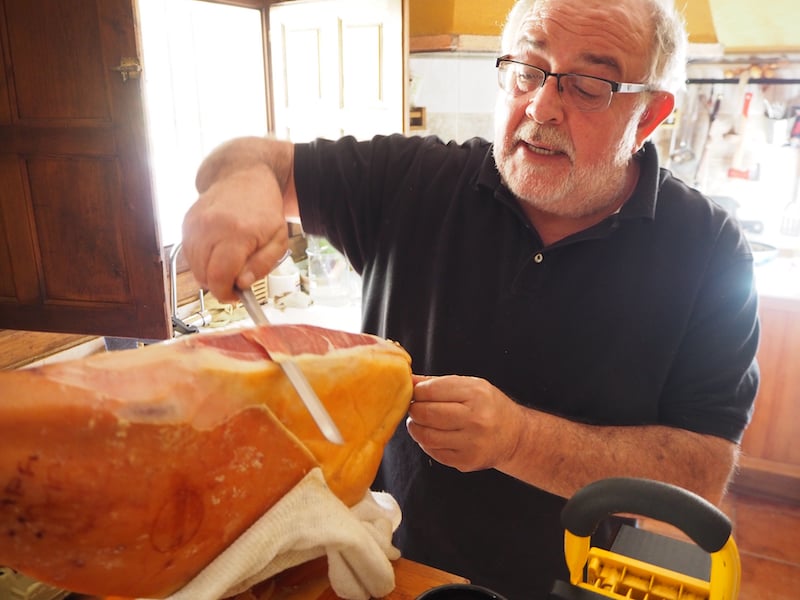
José Luis Sanchez Rodriguez loves to welcome us at this home, in the classic Spanish way of serving you local area ham (it seems to me that every family around here has such a juicy piece of “Jamón” at home) …
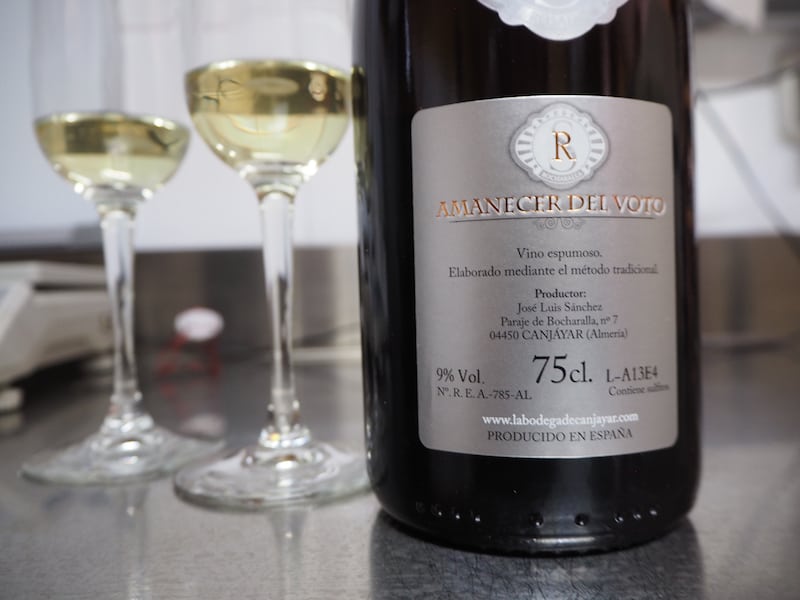
… the name of his wine estate, “La Bodega de Canjáyar” already hinting at the town of the same name, Canjáyar …

… or ask Rosa María Pascual (on the right) and her company “Envinados” to help you organise a wine route experience in Southern Almería, such as I’ve enjoyed it here …
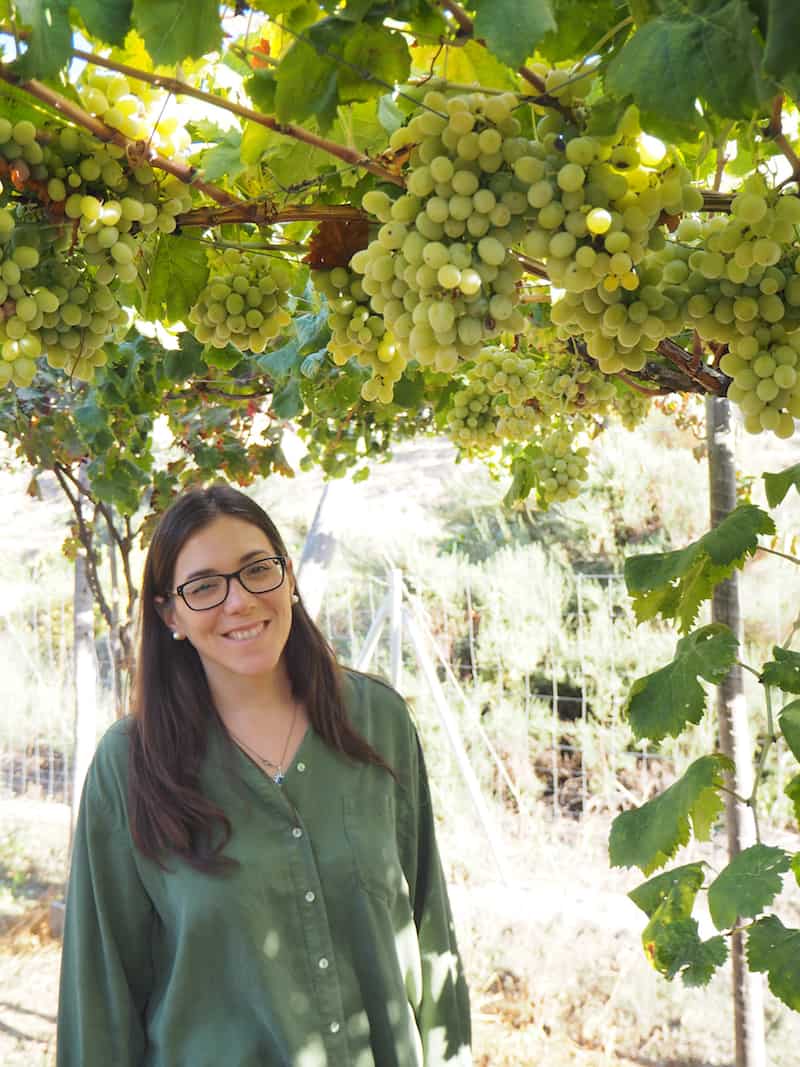
… Rosa who has studied wine in Spain’s famous La Rioja province and who has now returned home to help raise the standards and quality of wine production here. She also organises tours through her company called “Envinados”, and tells me why the local area grapes are known as “ship grapes” : Because they lasted really well during shipment abroad in former times …
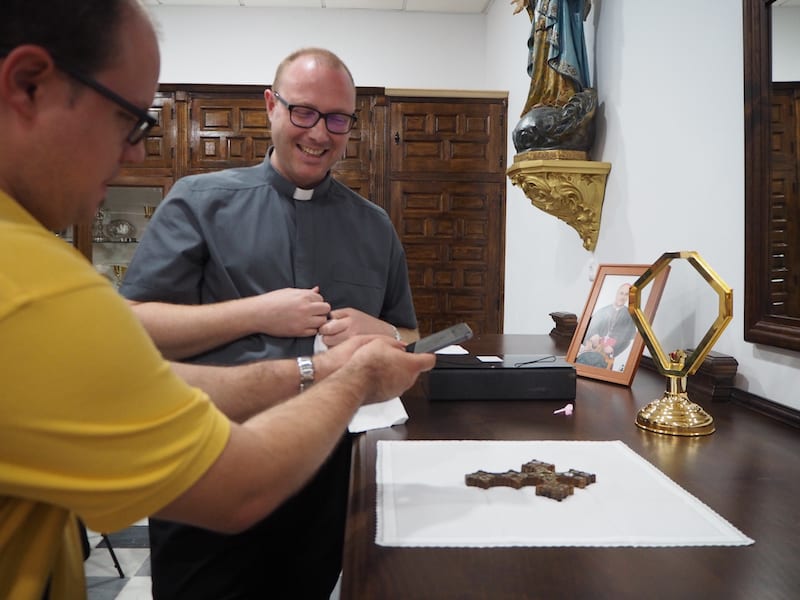
… Rosa María also introduces me to the parish priest of Canjáyar, who tells me an interesting story about the settlement history of this place (and who, naturally, joins us for lunch later, why it’s the Spanish tradition to always come together for food I guess) …
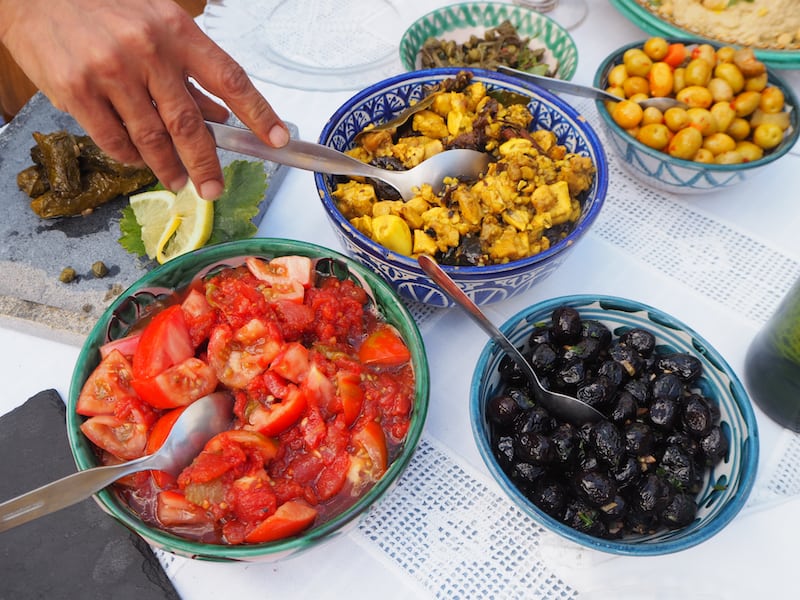
… who together with her team has prepared this beautiful bouquet of flavours, “Sabores de Almería” for us …
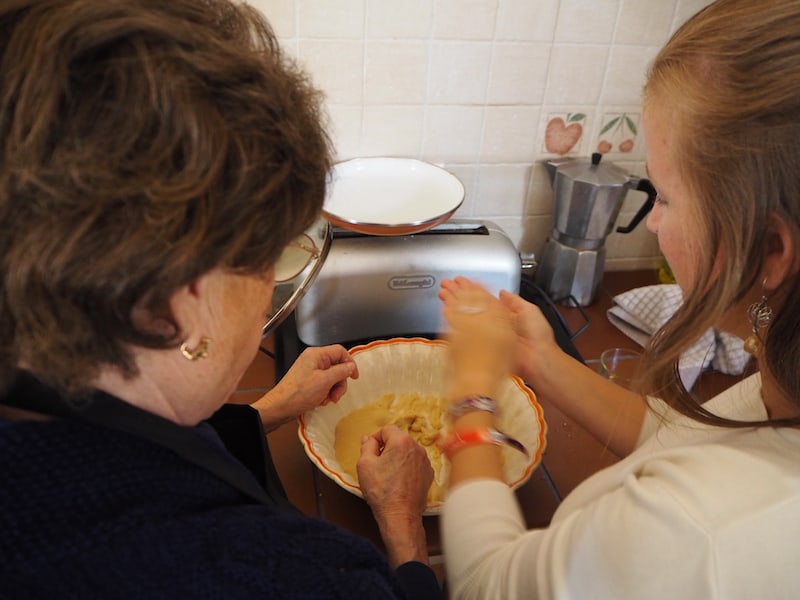
… it’s definitely a highlight to be assisting Rosa María’s grandmother in the preparation of dessert, which is surprisingly similar to some dumplings we prepare at my home in Austria!
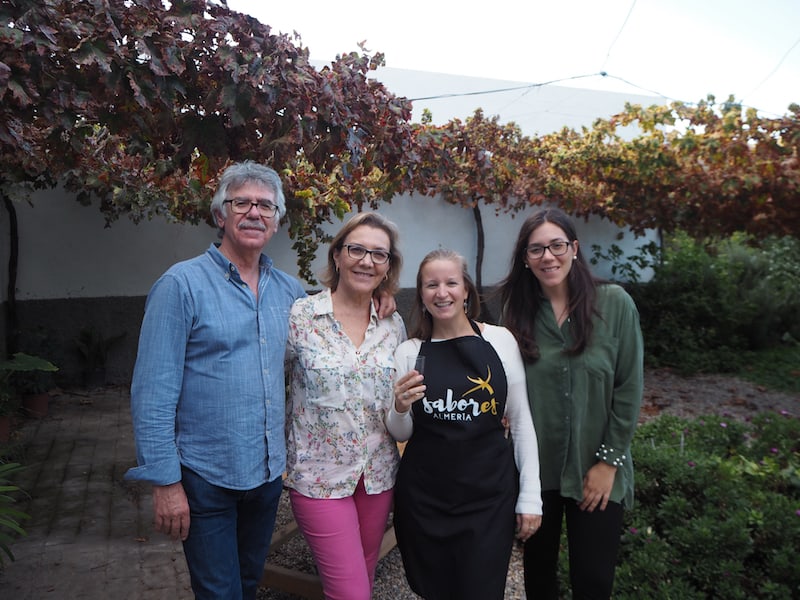
… lovely to be so involved in family life and discover a new area at the same time. Thank you, my new friend Rosa María & parents, for welcoming us in such a nice way !
So let’s continue talking about food. Almería, as I’ve mentioned, has so little rain that people don’t do a rain dance here, but have created a “rain dish” instead.
Take “Migas” (a type of polenta), freshly sliced tomatoes, fried peppers & sardines as well as some olives. That’s it! There you go, enjoying one of the easiest and most flavoursome meals I’ve ever had “in the name of rain”. Likely, because for soaking the Migas, as well as producing the veggies, you do actually need quite some water.
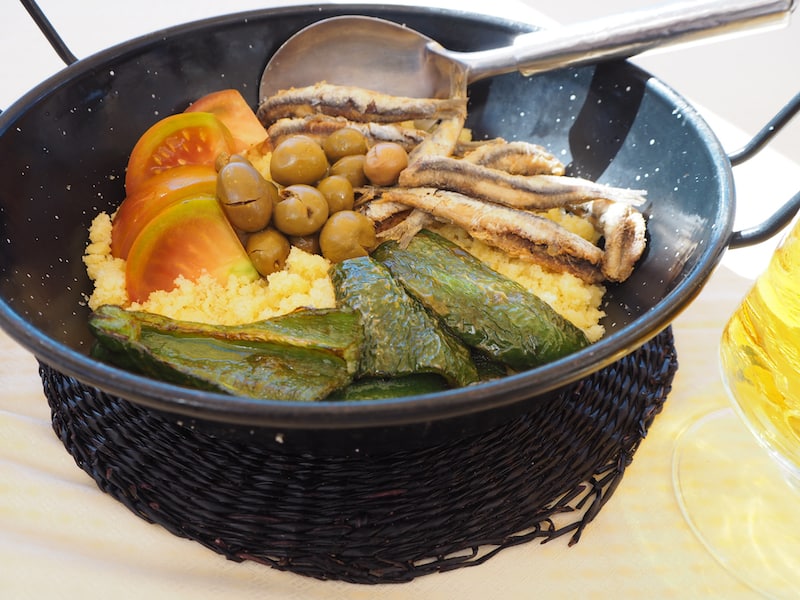
Always worth trying – a local’s favourite, called “Migas with Sardines from Almería” in this case. I enjoyed this meal right next to the sea, in a restaurant called “La Goleta”.
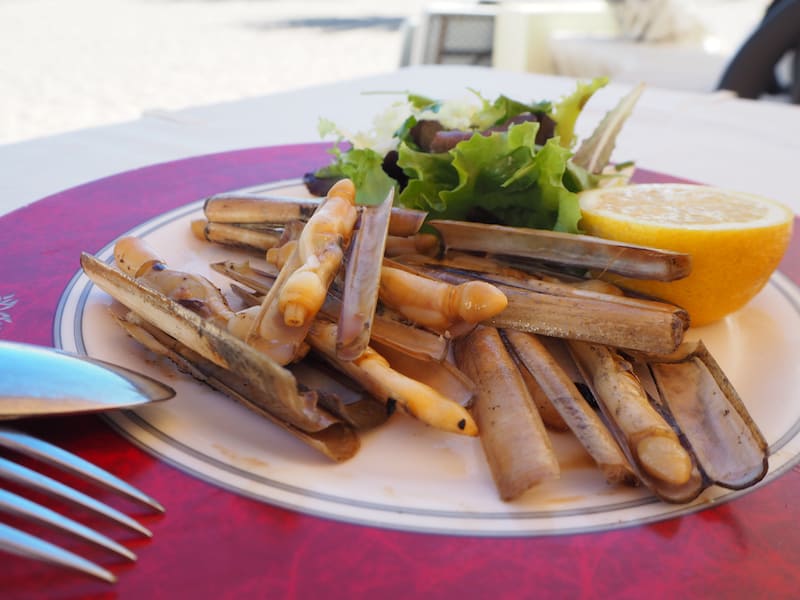
And why not stay with the local area seafood? It’s delicious, and you can have all of it at the classic chiringuito restaurant “El Nido” (The Nest).
So back to the life-giving force of water, and the (cultural) role it plays in this semi-desertic landscape of south-eastern Spain. The story of water is the story of Lola Gómez Ferrón, who in my experience is the ultimate in terms of being a true “plant whisperer”. Having grown up in the rise of the “Mar de plástico” (Sea of plastic), she has opted for the ecological side of food production in the vast swaths of southern Almería’s greenhouse farms, the extent of which can even be seen from space. Water, key to maintaining such large cultivation areas, has once been discovered like oil in the Arabic deserts, tapped from deep underground. It is, together with the sun and the plastic-covered green house farms, protecting the plants from too much wind, what drives the economic powerhouse of Almería – and there is no better person to meet than Lola herself to tell you everything you need to know about Southern Spain’s green house farming history. Very interesting indeed, given the fact that Almería supplies veggies all over Europe from what is seemingly, a desert !
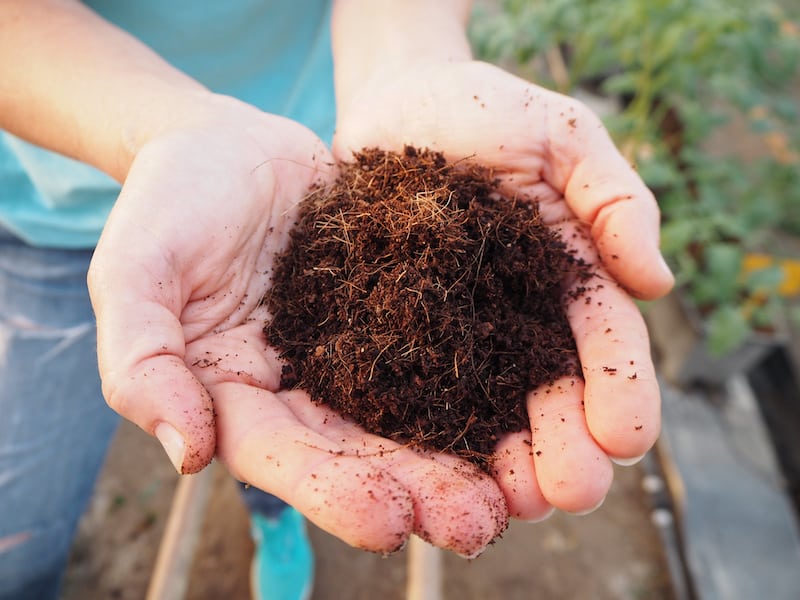
… in the space of just a few hours, she tells me all there is to know about the possibilities of doing ecological farming even in these large-scale circumstances.
Do watch her amazing TEDx talk about the agricultural development of Almería, about sustainable farming for the future and about her own, inspiring personal life. It is guaranteed to make you think different about you what may or may not take for granted – receiving fresh vegetables in winter from Southern Spain (right now, the video is only in Spanish, please keep checking back for when the English subtitles are out):
[su_youtube url=”https://www.youtube.com/watch?v=NFngY6nbFlo” width=”800″]
As far as off-season travel (in October, that is) goes: Almería then becomes a wonderful destination for outings by bike or jeep, the flat beaches or curvy coastal roads a delight for each of you adventurers.
Two wonderful guides with a true passion for their environment, David Monge and Juan José, have truly opened up my view and understanding of this particular place on Earth, as well as all of the fascinating local area facts about Almería. During spring and autumn (summer is virtually guaranteed to be too hot), Juan José takes visitors like me out on one of his bike routes, where his full-time job as an environmental analyst and consultant adds to the interesting facts he has to share about the land we see. I really like the two “Enrutados” trips we do, and recommend you to check out his website for more: http://www.enrutados.es.
David Monge, too, loves to share his passion, especially for the geology of his home: http://www.geogata.com. We love to discuss all things geology, history, and culture of the natura park Cabo de Gata-Níjar he leads me into, and it’s been a while since I’ve been taken around in a really cool jeep that truly befits this dry, Western-style mountain ranges and coastal roads. Thank you so much, dear David !

In the sunny season following the hot summers, autumn can be a wonderful time in the year to explore Almería’s flat, coastal areas by bike …

… then too, there is the view of an image almost gone rare, i.e. that of a shepherd and his flock of sheep …
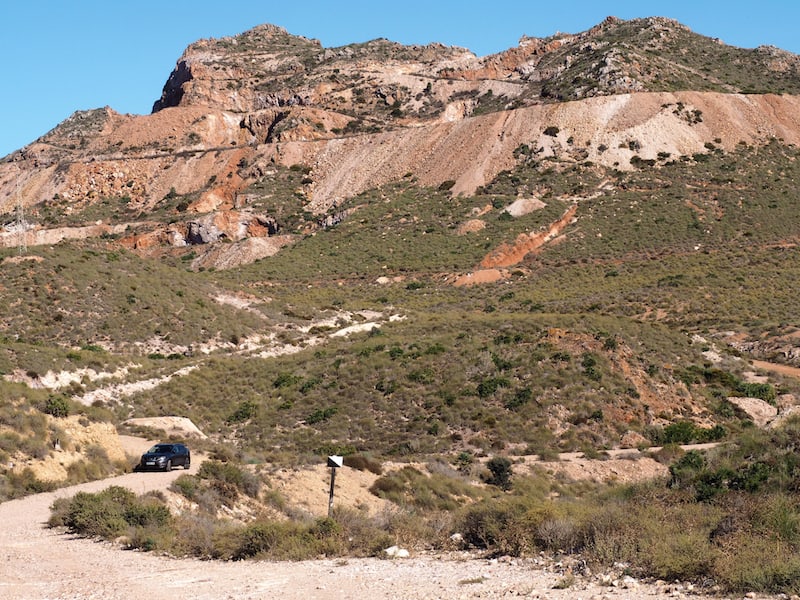
… love driving around the backcountry of the south-eastern tip of Almería, and Spain, in Cabo de Gata nature park …
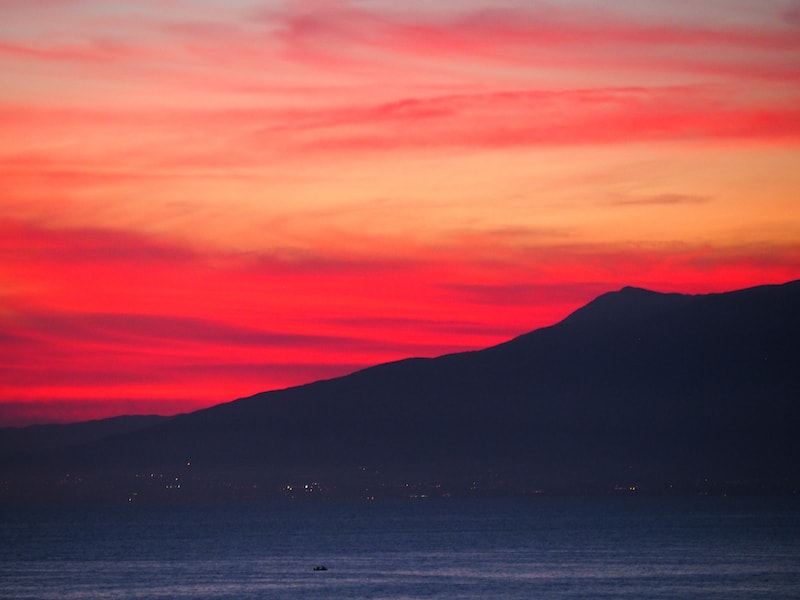
… and paints seemingly surreal colours upon the coastline of Almería city, its lights visible in the distance across the bay …
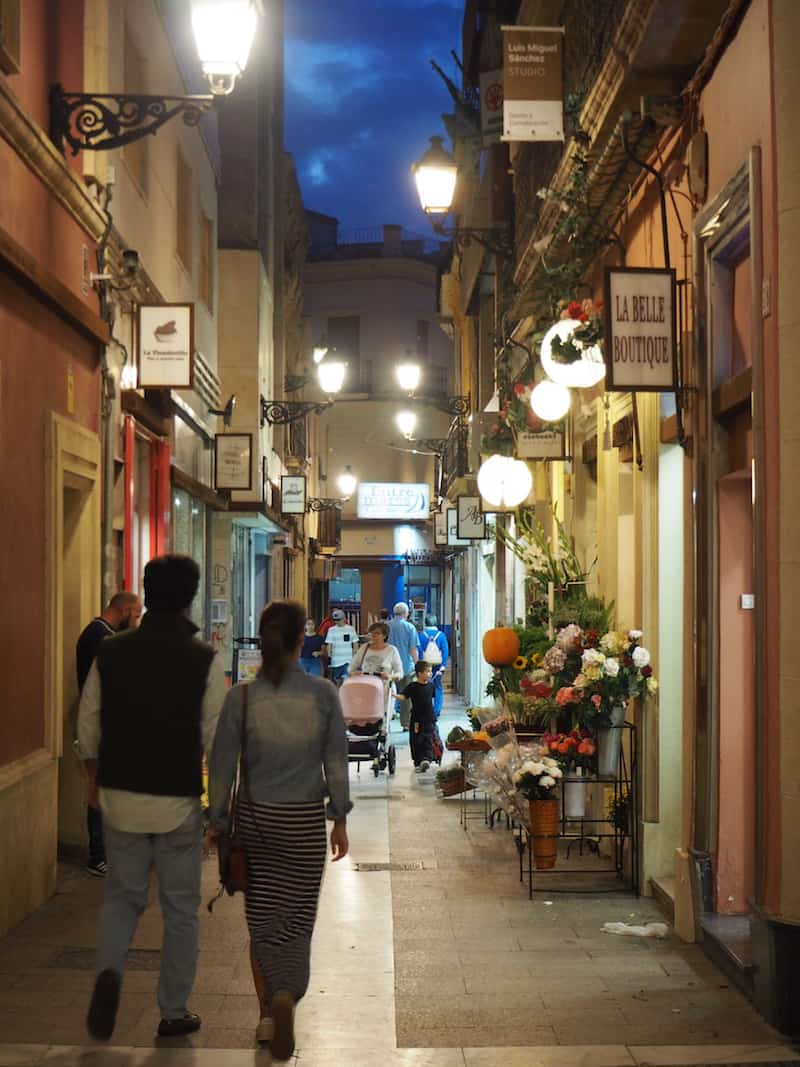
Last but not least, all I can advise you is to dive into the local, warm-hearted atmosphere that Almería city, its country and its people exude …
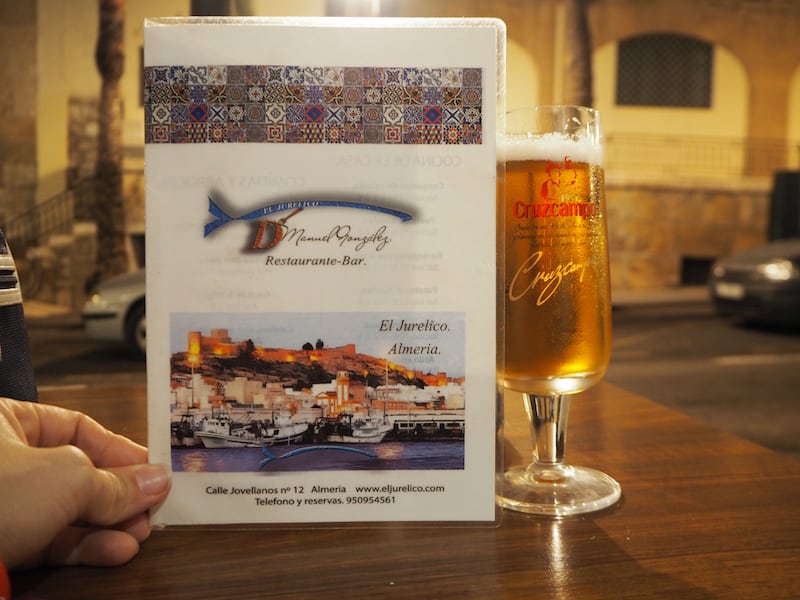
… and why not spoil yourself with yet another glass of delicious local beer? Almería, I must say, you’ve really left an impression on me in these days here!
Check out even more sunny travel photos here:
Disclaimer: I have been supported by the Spanish Tourism Board in Austria during the organization of this trip in the province of Almería, Andalusia. All opinions are my own.


